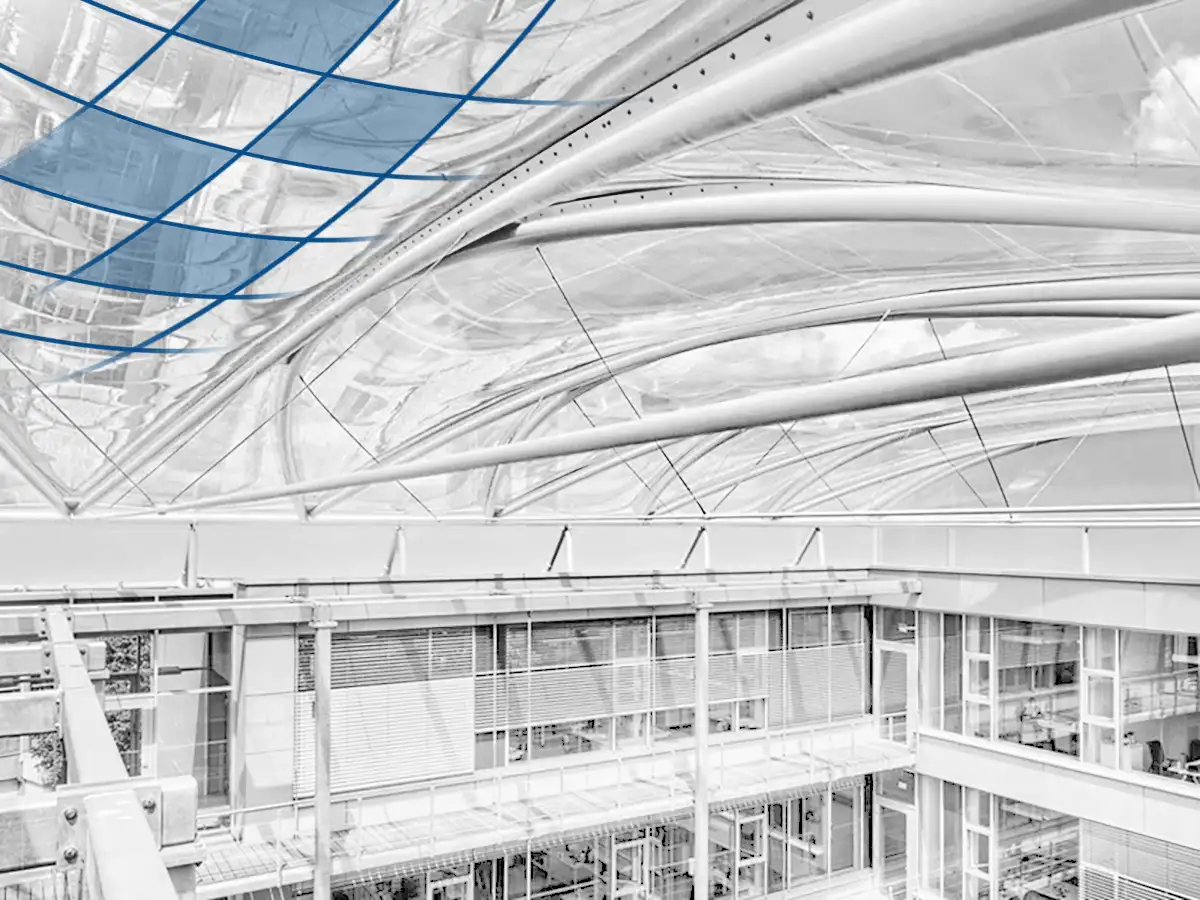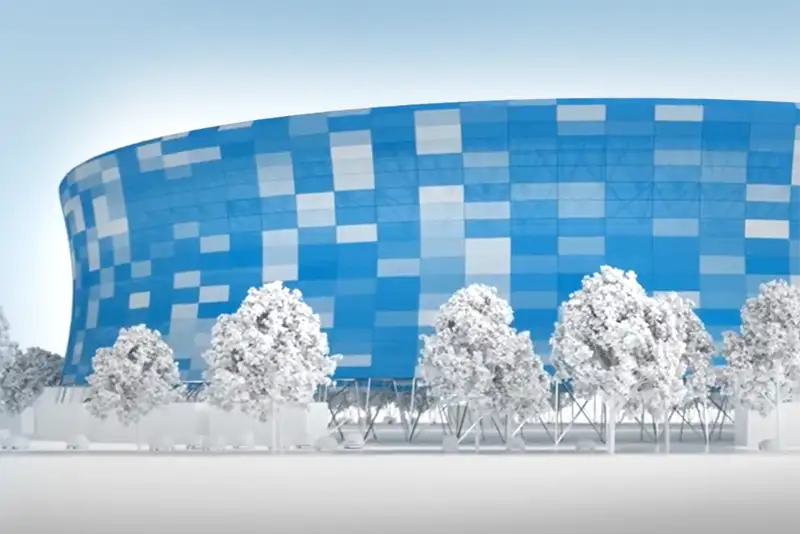ETFE film for architecture
ETFE film is already used in a variety of ways in contemporary architecture, because with the high-transparent, robust and durable building material light-flooded and sustainable building designs can be realized. Innovative architecture firms particularly like to use the ETFE material for large membrane constructions on exterior facades and roofs in order to realize dynamic shapes and designs.

Inspirations
Place: Munich, Germany
Product: NOWOFLON ET Z
Project size: 8000 m²
Architect: unknown
Fabricator: Taiyo Europe
Place: Cartagena, Spain
Product: NOWOFLON ET Z-C
Project size:
Architect: Selgas Cano
Fabricator: Lastra & Zorrilla
Place: Atlanta, USA
Product: NOWOFLON ET Z
Project size: 25000 m²
Architect: HOK
Fabricator: Birdair
Place: Iurreta, Spain
Product: NOWOFLON ET Z
Project size: 493 m²
Architect: I3 Arquitectos, Gonzalo Ispizua
Fabricator: IASO S.A.
Place: Anaheim, United States
Product: NOWOFLON ET Z
Project size: 6000 m²
Architect: HOK
Fabricator: Vector Foiltec
Place: Le Havre, France
Product: NOWOFLON ET Z-C
Project size: 20000 m²
Architect: KSS Architects / SCAU Architectes
Fabricator: NOVUM
+ ETFE Properties
Fluoropolymer ETFE is very popular in architecture, as it allows modern and at the same time resource-saving designs. ETFE (ethylene tetrafluoroethylene) is a light-weight and elastic fluorine-based plastic which is particularly robust and self-cleaning.
The NOWOFLON ET film is economically very attractive and has optimal properties and quality features in order to realize breathtaking architectural projects.
- LIGHT- & UV-PERMEABLE
- DURABLE & RESILIENT
- 100 % RECYCLABLE
- SUSTAINABLE
- LOW WEIGHT
- FLAME RETARDANT
- SELF CLEANING
+ Innovative Ideas and Inspirations with ETFE-Folien
All over the world, architects use our ETFE films to realize innovative and aesthetic constructions. Impressed and inspired, we follow the unique projects realized with our premium films.
Let yourself be inspired by fascinating buildings with NOWOFLON ET for architecture:
DO YOU HAVE ANY QUESTIONS?
Please contact us – we will be happy to help you find the perfect film solution for your application.
